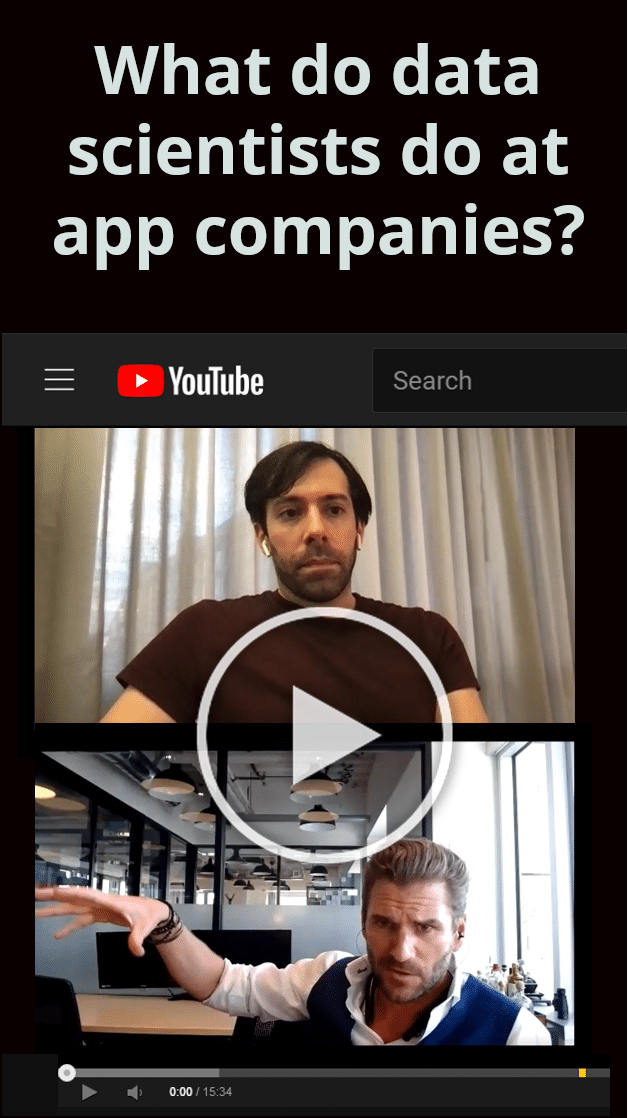Building a mobile app first-party data strategy
Mobile app privacy has been at the forefront of the news for the mobile app ecosystem, new technology restrictions have fueled company mergers reacting to impending changes from historically traditionally carefree, unregulated data sharing practices. IOS 14 changes, cookiepocalypse, GDPR, CCPA, and the planned Google GAID restrictions are just some of the increasingly restrictive policies that are changing the ecosystem. For mobile app developers, a popular outcome of these policies is the rise of the belief that utilization of first-party data will be the path forward for mobile app developers and marketers:
“The race to agglomerate as much first-party data in light of these ecosystem changes has already begun, with frenzied M&A in both the ad tech and mobile content spaces,”
Strategically, Chartboost’s $250MM acquisition by Zynga was largely to “extract more value from the first-party data gained from people playing its games.”
And closing a recent Facebook app monetization report was the advice to mobile app publishers: “Leverage your own first-party data in a world where it’s becoming more scarce”
Traditionally a term coined by marketers, first-party data is defined as “the information you collect directly from your audience or customers.” For app owners, this ranges from user actions to device IDs, purchase transactions, geography, timestamps, and anything app developers can (legally) collect from users of their mobile apps.
But to most, it may not be readily apparent how first-party data will actually help drive growth for app developers. This article is to help mobile app developers and marketers understand how to build and utilize a mobile app first-party data strategy to help them with the growth of their applications amidst the turbulence of changing data privacy policies.
Goals of a first-party data strategy:
Before getting to the how let’s focus on the “why.” What are we trying to do with our data, how exactly will it help drive growth?

First, it will allow you to better understand your users, their behaviors, and their performance throughout the usage of your app. Do you know who are your most valuable users? Can you track their actions through the app? Do you know where users leave the app? When and why are they purchasing? How are users getting engaging, getting stuck, or buying more?

Second, an effective data strategy will allow you to prioritize where you spend your time. This will apply for both marketing – deciding which campaigns are driving the most ROI and which are wasting money—and to product changes– where should you focus your development activity? Are you better off working on an onboarding workflow to increase day 1 engagement, or are you better off creating more content to extend the usage of long-term users? Effective utilization of your data will allow you to know where to best spend your time.

Third, you’ll find indicators for early prediction of user value. This is an important one for marketers or anyone trying to buy users effectively. Gone are the days of shipping your user data off to Facebook for lookalike audiences, or shipping back user LTVs to your MMP to drive ROAS. Facebook now requests you send them the user value – or Conversion Events within the first-24 hours after install. Earlier the better: “I can’t stress how detrimental delay is to advertising campaigns.” says DataSeat’s CEO David Philippson. These indicators will help you send signals for value back to the buying parties to help with their targeting.

But the benefit of early indicators isn’t limited to predicting campaign value. Early indicators will also help you predict user behavior, mobile app product teams use these early indicators to identify potential churn and drive forward user-engagement opportunities. Our customer Geoff Hladik made an important discovery about user engagement in his app: “Users are twice as likely to stick around if they complete a tutorial.”


Of course, the ultimate goal is to earn more from your app – and there are a number of factors at work helping you increase revenue:
– Finding more valuable, profitable users in a UA campaign;
– Wrestling back margin from the ad networks that traditionally did your targeting and lookalike audiences for you;
– Driving better engagement and increasing retention to deliver more value, and receive more value from app users.
Start with the data infrastructure:
Your first-party data strategy hinges on your ability to collect, store, analyze user data, then to take action on your findings. For most, this means building a data pipeline and connecting to user-analytics or BI tools to enable data exploration among your team.

A typical data analytics pipeline will cover a scalable method from data-in, to actionable data-out. Since these pipelines deal with huge amounts of data, the ETL/ELT processing must be designed to process data at a massive scale. We cover the basics of building your own in a recent article: “Best Practices: Your data Architecture and Data Pipeline”
What data you should be collecting:

User-Actions – Also called analytics, these are your user’s actions and activities in the app. Specifically helpful are user-actions helping measure user interactions with your app. Audio apps have user-plays, puzzle games will track games completed, art apps will track user progress. (Firebase, Mixpanel, Flurry)


Revenue & Earning Events – in-app impressions (IAA), in-app purchases (IAP), subscriptions, and other revenue events in the app.

Other important items – invariably, each app will have events that are important and these should not be overlooked. Social post-engagement, web events, customer emails, support tickets, etc.
Analyze and take action:
So you’ve got the data in one place, now what? A first-party data strategy will allow you to measure behavior and drive positive change. The user-behavior and app changes will depend on your goals—and hopefully will be driven by priorities you’ve learned through your data exploration. But don’t expect this to be wildly clear at the first pass. We’ve run into many customers who’ve been overwhelmed on where to start, or not sure how to take action for change. So we’ve outlined a simple procedure:

Step 1: Measure your users
In most cases, as an app developer, you will have assumptions and hypotheses of the cause of user-churn, the indicators of valuable users, or other important metrics. Start with these assumptions and measure them, then let this drive priority. We’ve heard many, here are some ideas on where to start:
Identify user-paths & behavior: Tracking user behavior – user-onboarding for instance – will allow you to see where and how users are interacting with the app, where they’re engaging, and where they’re churning.
Example: Geoff Hladik of Visual Blasters started with a hypothesis that onboarding was an important part of long-term user retention. He was right.
AB tests: Measuring the outputs of your AB variants across important user metrics is key. While the output of a Firebase AB test may show the user has played more games, what does that do to revenue, or better yet LTVs?
Example: Random Logic Games measures LTV outputs of an AB-test on how game complexity can help increase user retention and engagement. By tweaking game mechanics was able to drive up user LTV 10% in a single test
Valuable actions and user events: Key for post-IDFA campaign optimization, measuring user’s engagement with events can help you build a model of predicted user lifetime value (pLTV) – that is predict the value of a user early.
Example: Mike Newman, creator of Flow Free uses the number of puzzles completed on a user’s install day to identify the value of a user on day one.

Step 2: Iterate positive change
Measurement may give you an indication of value, or engagement problems but it’s only half of the equation. Only by making iterative changes will you change user behavior and app performance.
Change user behavior: After your key findings on user behavior, you can drive change of those users, influencing them to increase engagement, interact more effectively or stick around longer.
Example: After finding a spike in engagement for users who elected into a paid feature, Geoff Hladik ran an experiment where he gave that paid feature away for free to users after watching a video. After adoption, the increased user engagement and, surprisingly, the overall feature purchases drove up user retention and LTV of those users a whopping 21%.
AB test outputs: The single biggest challenge with running AB tests is getting reliable, measurable long-term change.
Example: Advice given by Alex at Random Logic Games is to start with discrete, very different outcomes to increase the chances of measurable change.
Prioritize and focus: Dollar outcomes can bring clarity and drive priorities, this approach should be embraced as it will help give you clear ROI on your activities.
Example: Sebastian Hobarth of PixelTrend Apps “knew IDFA opt-ins were important” but didn’t know how important they were. After finding out that an opt-in was 6X more valuable, Sebastian focused on AB testing to increase opt-in acceptances. The outcome? A 30% increase in acceptances drove up overall app revenue by 50%.
Conclusion:
Despite the market moving in a direction to make it harder to collect, share and utilize data, it is clear leveraging first-party data is undoubtedly the future for driving mobile app success. We hope this article helps you identify some strategies, outcomes, and ideas on how to build their very own first-party data strategy.
About us:
AdLibertas is a data platform specifically built for mobile apps. We help app developers leverage their first-party data to help achieve their growth goals. If you’re interested in seeing how we can help you with your mobile app growth goals, get in touch!


